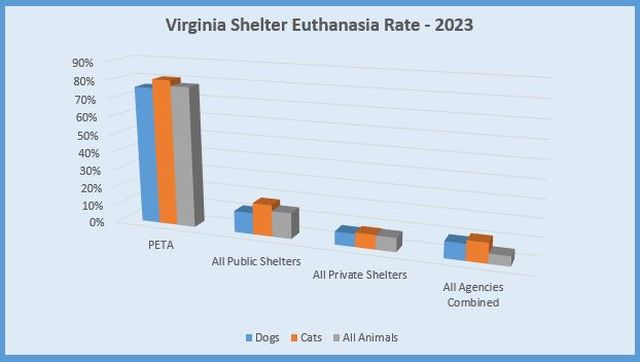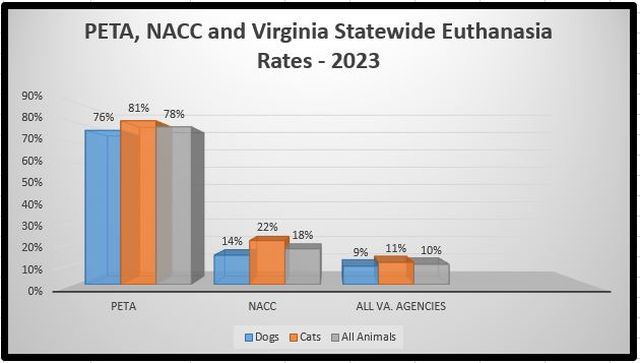Animal rights group People for the Ethical Treatment of Animals (PETA) recently posted the "news" that it had "newly obtained public records" showing that certain research universities had euthanized laboratory animals during the COVID-19 pandemic and that PETA had complained about this to the National Institutes of Health. In its zeal to attack the use of animals in medical research, PETA described this as a "mass killing spree." What this ignores, however, as reported by The Chronicle of Higher Education back in 2020 when all this happened, is that universities made these difficult decisions because they had no choice. Social distancing requirements that forced animal care personnel to stay out of the labs, precluded the delivery of proper animal care. It was not humane to allow the animals to go without food, water and other husbandry. But what we thought was particularly interesting is PETA's use of the rhetoric "mass killing spree" in light of what goes on in its own facility in Norfolk, Virginia.
As an animal shelter regulated by the Virginia Department of Agriculture and Consumer Services (VDACS), PETA must file a report annually that inventories the dogs, cats and other animals it had on hand during the prior year and that states what happened to them. As we have reported before (see, e.g., here), PETA's euthanasia rate has consistently exceeded the rates of other shelters in Virginia by wide margins. The data for 2023 is no different.
The graph below, based on data reported to, and published by VDACS, shows shelter euthanasia rates for 2023 — that is how many animals were put down as a percentage of how many animals the shelter had on hand during the year. The results for PETA are shown next to the results for all public shelters, all private shelters and all agencies combined in Virginia.

PETA often tries to defend its high euthanasia rate on the ground that it is an "open admission" facility that takes in all animals regardless of condition and that other shelters — particularly the "no kill" shelters — have lower numbers because they are more selective in the animals they take in. However, the Norfolk Animal Care Center (NACC), which is run by the City of Norfolk and is right in PETA's neighborhood, describes itself as "open-admission, providing a safe haven for animals from the City of Norfolk." And NACC's reported euthanasia results are dramatically different than PETA's. For example, as the table below shows, even though NACC took in 1.7 times as many dogs as PETA, NACC euthanized them at a rate of only 14% while PETA put them down at a rate of 76%. The same trend is seen with cats and other animals.

The data above is illustrated in the graph below.

PETA argues that euthanasia means "good death." If the deaths in PETA's shelter are "good," then why is this any different than what the universities had to do with the lab animals? Laboratory mice generally are bred for research. They have no other purpose and are not practicably adopted out once the experiment has been completed. On the other hand, given the dramatic differences in Virginia shelter euthanasia rates shown above, it is hard to believe that every single dog and cat that met its end in PETA's shelter during 2023 was unadoptable.
Disclaimer: This Alert has been prepared and published for informational purposes only and is not offered, nor should be construed, as legal advice. For more information, please see the firm's full disclaimer.
